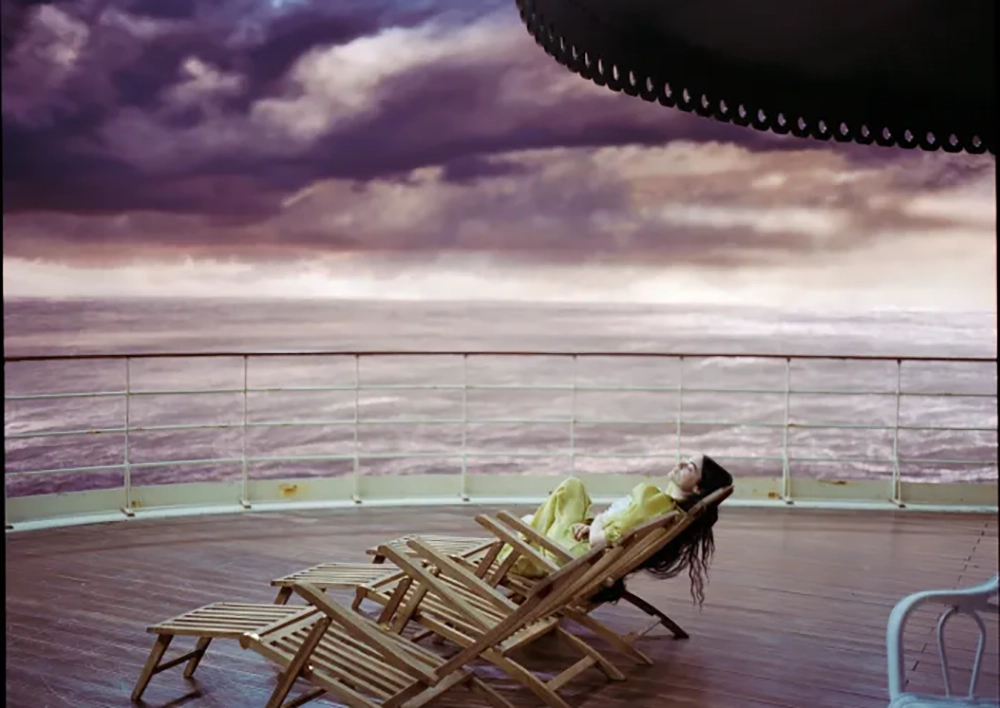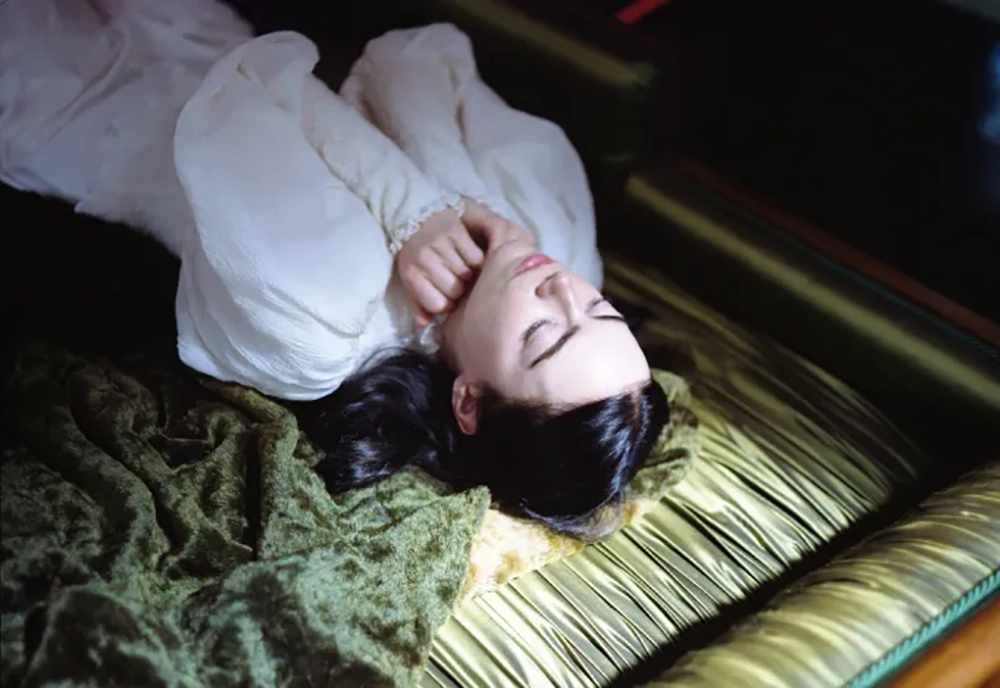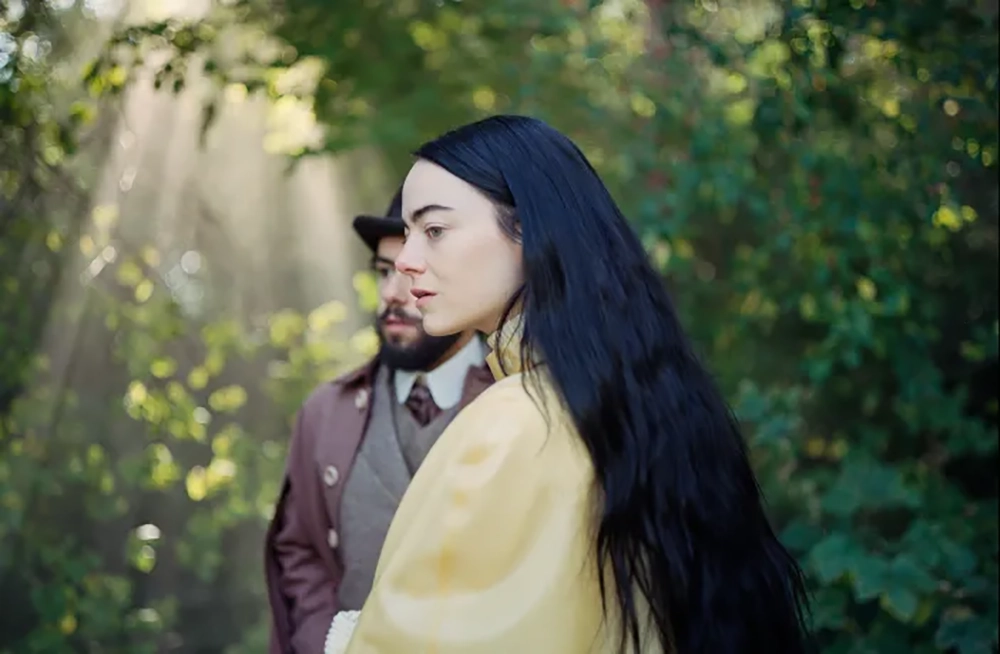Yorgos Lanthimos adapts Alasdair Gray’s weird, acclaimed novel “Poor Things” to construct an exquisite film in which steam-punk taints the baroque, and Buñuel’s “Belle de Jour” comes face to face with Mary Shelley’s classic creation, “Frankenstein.” And it is all anchored by the ever-growing talent of the Greek filmmaker and the astonishing performance by Emma Stone, both of which carry the project to unexpected and expressive heights.
The Weird yet Controlled Concoctions of Yorgos Lanthimos
If there is one style of modern director that many have tried to replicate yet failed to do so, it is Yorgos Lanthimos’. The Greek filmmaker has made a name for himself by using deadpan comedy in cold and controlled stories, mixing melancholy and hilarity in a manner that isn’t emotionally piercing perse, but rather provocative and thought-provoking. It’s hard to copy and paste that template because it requires plenty of precision in the comedic and narrative elements. He showed glimpses of this weird concoction with his sophomore feature, “Alps.” However, “Dogtooth” (his debut) had these same elements in a more eerie way. As his career continued, he expanded onto more adventurous and courageous projects. It demanded even more precision and acuteness to pull his techniques off.
Both “The Lobster” and “The Favourite” demonstrated that not only does Yorgos have the knack to handle an eclectic array of stories and add his storytelling maneuvers, but also that he’s able to grow within each project he helms. As the narratives raise their stakes, his creativity and ingenuity do so as well. That’s why he has become one of the most unique and inventive directors working today. For his latest ambitious project, Lanthimos ventures off into the world created by Alasdair Gray in 1992. Science and religion clash to the same degree as men’s desires and women’s independence. Yorgos Lanthimos has decided to adapt the Scottish writer’s book “Poor Things” and create something equally bizarre, provocative, and heartfelt—the latter being a new trait for his films.
Lanthimos takes the Frankenstein-inspired story and adds some Buñuelian twists by taking the Catherine Deneuve-led “Belle de Jour” as inspiration. Creation and deconstruction are at the forefront of this tale. This is a story about a woman who grows as her experiences throughout the world challenge her view and perspectives on love, death, identity, and everything in between. It’s an off-kilter coming-of-age tale containing equal light and darkness. A broken woman’s psyche is slowly developing by finding meaning in a world deemed cruel and cold. Even though you might not sense it in its first few minutes, with the view of oddball creations and uproarious dark comedy, “Poor Things” is Yorgos Lanthimos’ most human film to date.
A Mad Doctor and His Obsession with Reconstruction

“Poor Things” begins with death, the initial destruction that paves the way for a journey of self-discovery and search for essence. To be more specific, the first image that Lanthimos plants into his latest work is the suicide of the woman whose story we will follow. A professor-scientist named Dr. Godwin Baxter (Willem Dafoe) has managed to save what little was left of that floating body in the waters by trying to reanimate her back to life. He has removed the brain of the unborn infant inside her body and implanted it in the mother’s head. Hence, the reconstruction of a deceased, unknown woman transformed into the one we know as Bella Baxter (Emma Stone). The reason why Dr. Godwin did such a thing is revealed as the story unfolds. But we are given the cause for his pursuit of his uncanny scientific explorations.
The mad scientist’s father experimented on him. It left behind a man who adopts a look that’s resemblant to Frankenstein’s monster more so than the film’s representative of such. Dr. Godwin’s urge comes from his troubled past. And the scars still remind him of the cruelty his father did to him in the name of science. Because of this, you can see the cause of his reanimator persona. The man is put to the side due to his strange looks and methods—uses cadavers as tools for companionship. More so than a father figure, he’s a god in Bella’s eyes. Dr. Godwin raised the remnants of her past life from the dead and helmed the role of creator. He’s the only person caring for her. He’s the one teaching Bella how to walk, talk, sleep, and all the essentials for her to grow.
A princess locked inside her castle, Dr. Godwin Baxter keeps his creation far from the outside world. Like Frankenstein, Bella is not prepared to face what’s beyond the household—the horrors and curiosity-driven facets of the world. They would be immediate targets for the people she encounters. The dynamic between Dr. Godwin and Bella is reminiscent of the twins in “Dogtooth.” Bella is a fully grown woman who behaves like a child, and the twins act similarly. Of course, Bella has an infant’s brain inside her mind, which separates her from the twins. Their persona is cut from the same cloth. It surges from the strict measures by her keeper and the separation from reality. The parental figure keeps them away from the world and each second spent away from it causes psychological turmoil.
The Reanimated Woman Who Wanders The World as She Pleases

Sooner rather than later, Bella will have a trip to set her free on all levels. This arrives via expeditions she was with the men who come into her life (Ramy Youssef’s Max McCandless, Mark Ruffalo’s Duncan Wedderburn, and Jerrod Carmichael’s Harry Astley). These three men will cause her to ponder and examine the essence of humanity, connection, and womanhood amidst strict societal constructions. There’s a play in the tropes configured due to Mary Shelley’s book. Yorgos Lanthimos, alongside screen-writer Tony McNamara, reconfigured the essence of the creature raised from the dead.
Bella—the representative of Frankenstein’s monster—isn’t posing as the hubris of man’s belief that they can replace nature. Instead, we see her breaking the mold of the puritanical Victorian era’s view of women by taking control of her mind, body, and soul. Initially, she might be a puppet in the hands of those who govern over her. Yet, her growth demonstrates that it goes the other way around. As the story unfolds, she finds wisdom and pleasure without servicing the demands of men or “polite society.” The more she learns about the world and its perception of womanhood, the more Bella’s control and autonomy of her desires and longings blossom into a beautiful bouquet.
This helps Lanthimos create some of his most visionary and touching observations and imagery in his filmography. There are many stories that break what Mary Shelley stated in her novel. However, none of them reach the point of ingenuity and intelligent crackpot ideation of “Poor Things.” It is astonishing how the Greek filmmaker maneuvers multiple tones and observations simultaneously. Dark comedy intertwines with poignant reflection on control, whether based on politics and manipulation or sovereignty and gender.
This heightened world is slowly turning upside-down because of Bella’s grasp and perspective. She slowly held it in her hands. You can see it in “Poor Things” looks and atmosphere. The steampunk attire slowly taints the baroque nature of the burlesque and pompous society. Nobody is going to determine Bella’s place in society except herself. Lanthimos and McNamara explore this forging and dismantling (and vice-versa) of power dynamics, conscience, sex, and philosophy in peculiar ways but with unexpected emotional touches and richness.

“Poor Things” is now available in select theaters across the United States, with an expansion coming on December 22nd, 2023.


